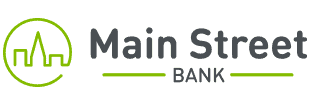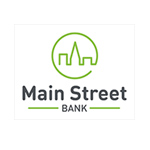Fraudulent activity continues to be on the rise and will likely continue as fraudsters become more and more advanced. One of the ways you can protect yourself and your company’s financial assets is to set up Multi Factor Authentication (MFA) on all your systems.
What is MFA?
MFA is for Multi Factor Authentication. It is an authentication method that requires the user to provide two or more verification factors to gain access to a resource such as an application log on or any type of on-line account. There are also various ways you can authenticate using MFA. A code can be emailed or texted to you, or you can have an MFA app on your mobile device that may ask you to verify an application that you may be attempting to access. Without this code or authentication, you will be denied access and a notification will be sent stating someone has attempted to access your account.
Almost all platforms that require login credentials have some form of MFA. If a platform does not offer MFA, you might want to think about finding a new application for that service.
How do I set up MFA?
Many common applications, such as those mentioned below, will ask you if you would like to configure MFA when setting up your account. Others may even require you to set it up to use the application. For existing accounts you have with login credentials, a simple internet search can help you with properly setting up MFA for an added layer of security.
These are a few examples of commonly used systems that integrate MFA into their security, and how to set it up:
- Business and personal finance account management
- Microsoft 365 – How to set up your Microsoft 365 sign-in for multi-factor authentication.
- Google – How to turn on two-step verification through Google.
- Yahoo – How to add two-step verification for extra security with Yahoo.
- PayPal – How to turn on two-step verification for PayPal account login.
- Facebook – How two-factor authentication works on Facebook.
- Amazon – How to use two-step verification on Amazon.
- Accounting software
- Credit card account management
- All email accounts
Password Management
When it comes to remembering passwords, the best option is to use a secured password storing service that also has MFA. Some examples of a password storing service include LastPass, Dashlane, and Zoho Vault to name a few. If you use a password storage service that does not integrate MFA, you should find a solution that offers an added layer of security. You should not store passwords on an Excel spreadsheet kept in your email inbox, as this can be more easily hacked than a secure password service.
Additional ways to prevent fraud.
While fraud attempts are not completely avoidable, there are best practices and tools you can use to prevent and proactively catch fraud before it becomes hugely damaging to your finances.
- Monitor your accounts daily to detect any transactions that appear suspicious.
- Set up alerts on your financial accounts to receive emails or text messages when activity occurs in real-time.
- Sign up for fraud protection services, such as Positive Pay for business accounts. Contact us to learn more about this service.
What to do if you suspect fraud in your account?
If you suspect fraudulent activity has occurred in any of your accounts, you should do the following:
- Contact your financial institution(s), especially if the fraud occurred on a bank or credit card account. For businesses, you must alert the financial institution within 24 hours or less to dispute fraudulent transactions.
- If fraud has occurred on a bank or credit card account, consider closing that account entirely and re-opening a new account with a brand-new account number.
- Change your login credentials (username and password) immediately.
If you suspect your Main Street Bank account has been exposed to fraud, we will do whatever we can to help. Contact us as soon as you notice unauthorized activity in your account at 508-481-8300.

